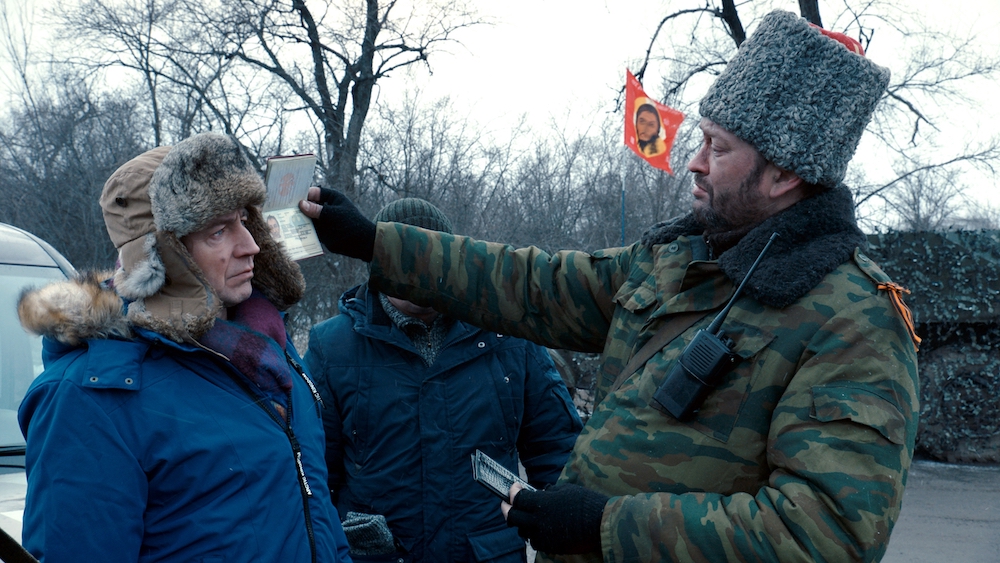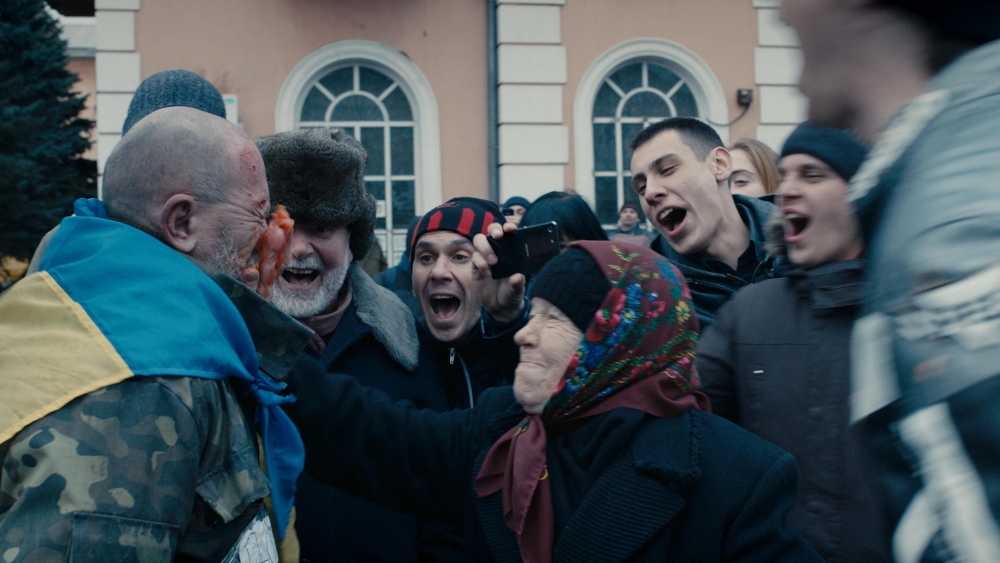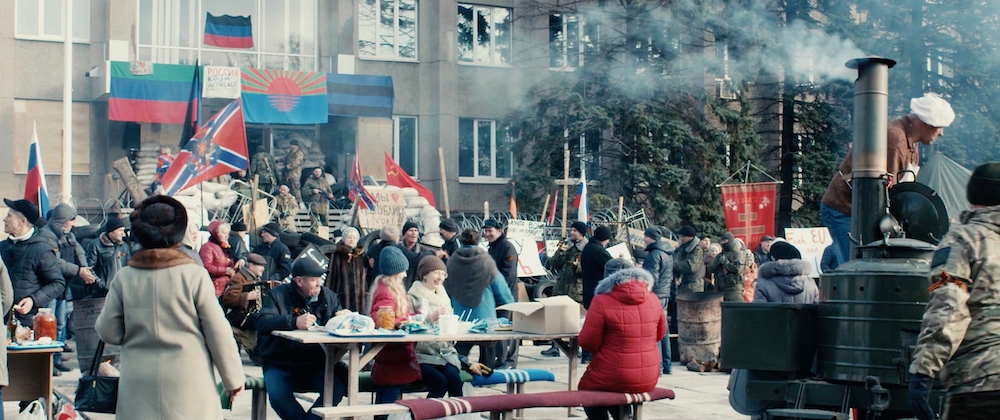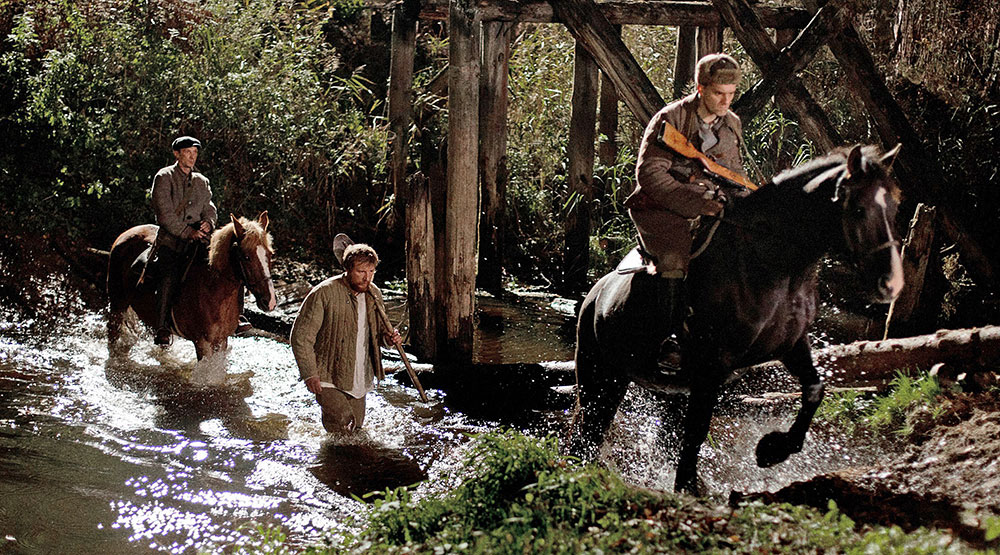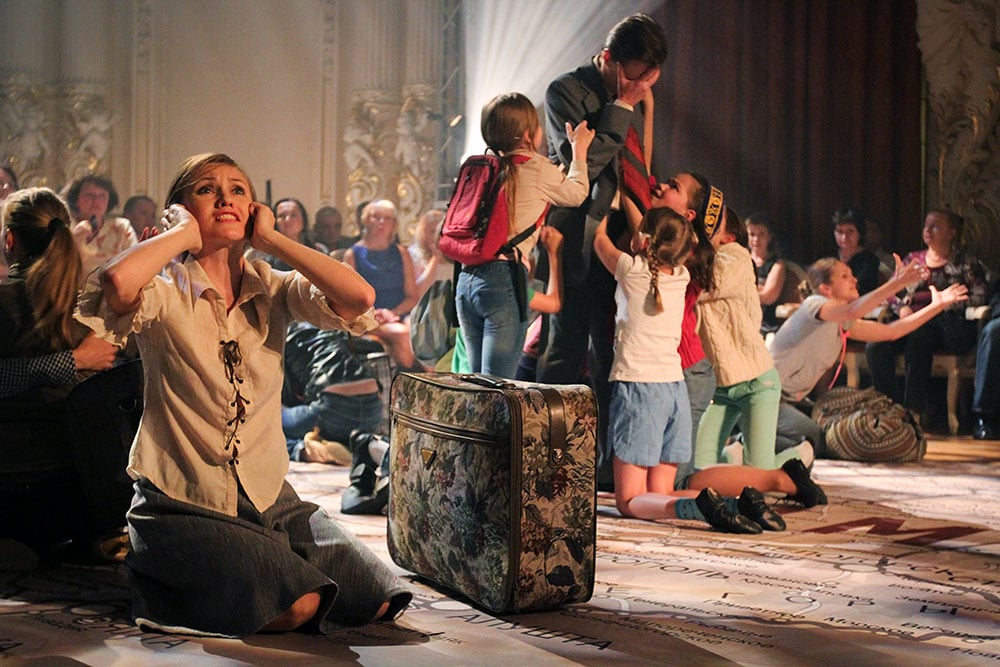Theatre of war: Sergei Loznitsa exposes the absurdity of the Donbass conflict in his new film
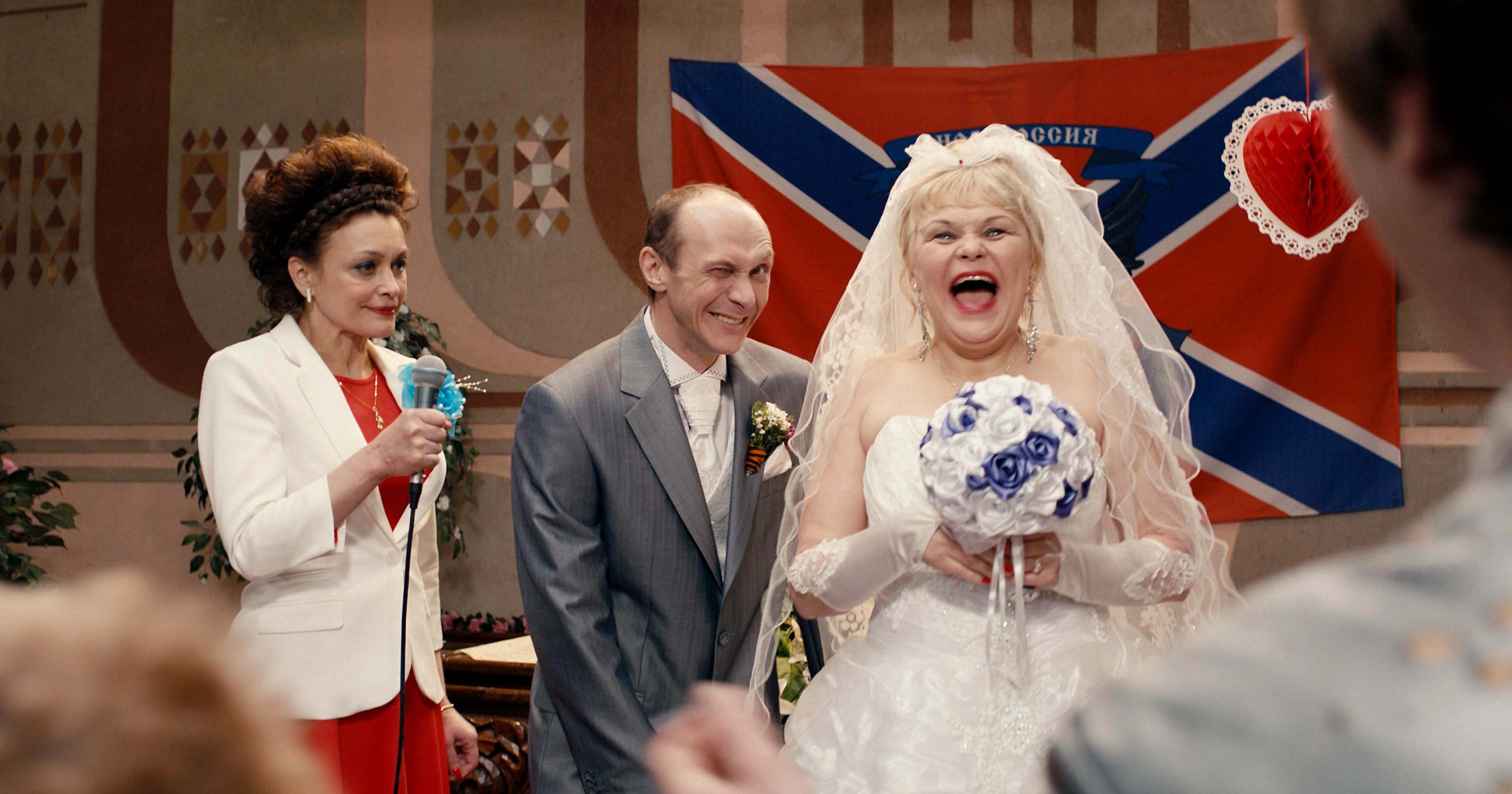
Ukrainian auteur Sergei Loznitsa has turned his camera on the war-torn separatist regions of the Donbass in his new film. For Meduza, film critic Anton Dolin argues that the result is a harrowing, hilarious anti-war statement
In Russian people say ‘It’s a bomb!” when they want to praise something. In this sense, you could certainly call Sergei Loznitsa’s Donbass a bomb — a time bomb, even. Whether this is a compliment is debatable. Though the chance of explosion is high, what is left uncertain is when it will go off (or whether it will go off at all). While European and American audiences aren’t familiar enough with the military confrontation in eastern Ukraine, Russian and Ukrainian viewers will probably dislike it as it’s less than complimentary to all sides of the conflict. What we are presented with is an exceptionally uncomfortable film that, although not a documentary, is a true heir to Loznitsa’s My Joy and A Gentle Creature.
The Donbass region of Ukraine, namely the unrecognised Donetsk and Luhansk People’s Republics (the film actually uses the now archaic term “Novorossiya”) is situated in a grey zone and not only in the legal sense. It’s the space between fantasy and reality, between a nightmare and a dream. You could call the region a neutral zone between the two enemy states — were it not for all the people who kill and get killed here.
This is a reality with no signs or identification, a land of “little green men” appearing out of nowhere. This is a theatre of war — the stress being on “theatre” — and this stagedness is exactly what Loznitsa explores in his new film. It’s not an accident that the film’s cast features no professional actors and the main roles are played by comedians Natalia Buzko and Georgy Deliyev; in this situation masters of commedia dell’arte are much more appropriate.
The first to appear on screen is an indiscernible film crew of extras we later find out are due to play fake eyewitnesses for some news reports. If the eyewitnesses are fake the viewer may ask, is anything else real? The woman with drawn on bruises under her eyes, hurriedly relaying something to the camera, is obvious enough. What about the blown up trolleybus in the background and dead bodies strewn around it? The answer to the question comes in the chilling and surreal final scene, filmed in a neutral documentary style, that resembles an excerpt of CCTV footage more than that of a film.
This is a theatre of war — the stress being on ‘theatre’ — and this stagedness is exactly what Loznitsa explores in his new film
Actors are everywhere. Even the border officer is a “performance artist”. Everyone is playing their own role but there are also roles that no one wants to play. In one of the episodes a German journalist asks the insurgents, who are sat on a tank eating dill pickles, to speak to the person in charge. What should be a simple answer to a simple question, turns into a schoolyard joke, with the rebels pointing at each other in hysterics, before leading the journalist to a confused “Cossack ataman” named Chapay.
Most of the characters in the film remain nameless; the rest are known only by their nicknames: Batyana (Father), Kupon (Coupon), Drovosek (Lumberjack). The only time we hear something close to a believable name, it is a couple waiting to be wed - even then, their names sound so flamboyant you’d think they were taken straight out of a Gogol novel.
The film is otherwise a series of harrowing and hyperrealistic episodes executed masterfully by Loznitsa’s long time cameraman Oleg Mutu. In this case, it’s not the plot that drives the film but the setting. We see a local criminal boss put on a show in a destitute maternity hospital where the head doctor steals food and medicine.
We watch border officers bully people trying to reenter the region, either to visit their relatives or check if the houses they had to flee are still left standing. We witness local authorities take a beautiful car off an unlikeable businessman who is then forced to hand over money for it. We meet a Ukrainian soldier led through town with a sign that says ‘volunteer of a punitive battalion’, then tied to a lamppost for locals to blow off some steam. The line between comedy and horror here is so fine it’s practically invisible.
There is no ambiguity about the director’s position: Donbass is a bold anti-war film
What’s more, the soldier is probably the only representative of the Ukrainian army in the film. Yet, you hear shots and explosions that tell you that they exist somewhere in the background. There are no doubts that Donbass wasn’t intended as a piece of Ukrainian propaganda. Loznitsa is interested instead in what goes on the rebel side of the barricades. We can only imagine what a sequel showing the other side of the conflict would look like.
In fact, there is no ambiguity about the director’s position: Donbass is a bold anti-war film. It doesn’t justify violence on any one side and demonstrates only how war cripples people and turns them into monsters, terrifying and ridiculous in equal measure. Those who don’t participate in violence, the film honours. There is one particularly poignant scene where the camera circles around a wrecked though still inhabited homeless shelter. You never catch a glimpse of who really is behind the camera. Is it the director or one of the many invented characters who might use the footage for their own propagandistic purposes?
As much as Donbass explores the nature of modern wars, it also highlights how press, social media and others sources turn war into a performance. This makes the film an even bigger paradox — it’s a film about that which cannot and should not be experienced as “just a film”.

It’s unclear whether the Cannes Film Festival organisers meant to schedule the film screening on 9 May, the day when Russia celebrates Victory in the Great Patriotic War of 1941–1945. Loznitsa’s Victory Day, a documentary that follows a group of Russian expats celebrating Victory day in Berlin’s Treptower Park, was screened on the very same day last year.
In Loznitsa’s new film, we hear the distinct rhetoric of modern Russian propaganda (built on “our grandfathers’ sacrifice”, and similar sentiments from the Second World War). Not only this, Donbass explores the insurmountable distance between a war that has a meaning behind it, and the modern war, the current conflict in Ukraine, that is absurdist but still as violent on all sides. The looming question that the film doesn’t directly ask, however, is whether there is a possibility of a “victory day” for this new kind of war or whether any result constitutes a defeat.
